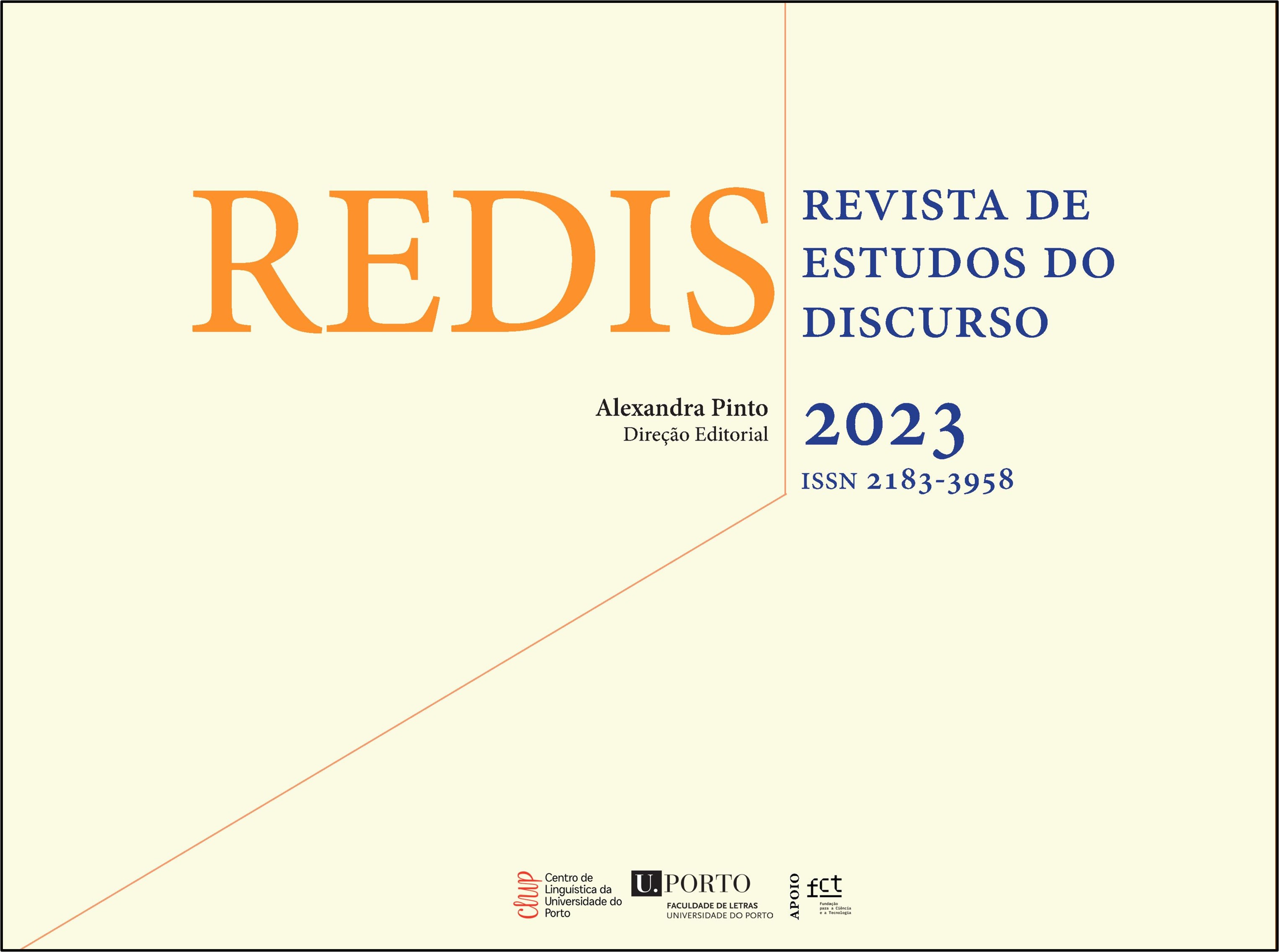Discourse, Text and genre: competing or complementary approaches?
DOI:
https://doi.org/10.21747/21833958/red13a9Keywords:
Discourse Studies, Academic Discourse, Genre, IntroductionAbstract
This paper discusses the possibility of building up a composite model for genre analysis in Discourse Studies. It compares the concept of genre within Sociodiscursive Interactionism (ISD, Bronckart, 1997), within Systemic-Functional Linguistics (Rose & Martin, 2012) and within Textual Linguistics (Adam, 2008), highlighting both their divergencies and proposing common approaches. The model also includes contributions from English Academic Discourse such as moves and steps from the analysis formula Create a Research Space (Swales, 1990, 2004), adapted by Bunton (2002) for PhD introductions, concepts such as lexical bundles (Biber, 2005) and textual realization devices (Coutinho & Miranda, 2009). The model is applied to texts taken from the included genre introduction in 60 research articles published between 2013 and 2022. Irrespective of the disciplinary area, analysis shows the emergence of lexical bundle patterns in the text structure, a preference for opposition linking words in a problem-solution structure and choices of persuasive adjectives applied to the research. Results suggest the advantages of combining concepts from different frameworks in genre analysis.
References
Adam, J.-M. (1992). Les textes. Types et prototypes. Nathan.
Adam, J.-M. (2001). En finir avec les types de textes. In M. Ballabriga (Org.), Analyse des discours. Types et genres: communication et interprétation (pp. 25-43). EUS.
Adam, J.-M. (2002a). Plan de texte. In P. Charaudeau, & D. Maingueneau (Orgs.), Dictionnaire d’Analyse du Discours (pp. 433-434). Éditions du Seuil.
Adam, J.-M. (2002b). Texte. In P. Charaudeau, & D. Maingueneau (Orgs.), Dictionnaire d’Analyse du Discours (pp. 570-572). Seuil.
Adam, J.-M. (2008). La linguistique textuelle. Introduction à l’analyse textuelle des discours. 2.e éd. Armand Colin.
Bazerman, Ch., Little, J., Bethel, L., Chavkin, T., Fouquette, D., & Garufis, J. (2005). Reference guide to Writing Across the Curriculum. Parlor Press.
Biber, D. (2005). Paquetes léxicos en textos de estudio universitario: Variación entre disciplinas académicas. Revista Signos, 38(57), 19-29. DOI: http://dx.doi.org/10.4067/S0718-09342005000100002
Bronckart, J.-P. (1997). Activité langagière, textes et discours. Delachaux et Niestlé.
Bunton, D. (2002). Generic moves in PhD Thesis Introductions. In J. Flowerdew (Ed.), Academic Discourse (pp. 57-75). Pearson Education.
Coutinho, A. (2023). Linguística do texto e do discurso. Húmus.
Coutinho, M. A., & Miranda, F. (2009). To Describe Genres: Problems and Perspectives. In Ch. Bazerman, A. Bonino, & D. Figueiredo (Eds.), Genre in a Changing World, Perspectives on Writing (pp. 35-55). The WAC Clearinghouse and Parlor Press. http://wac.colostate.edu/books/genre/
Devitt, A. (2004). Writing genres. Southern Illinois University.
Gouveia, C., & Santos, J. V. (2022). Texto e Contexto: Que Relações? In P. Silva, L. F. Barbeiro, F. Caels, C. Gouveia, J. V. Santos, C. Marques, & C. Barbeiro, Teorias discursivas em diálogo: Perspetivas e análises (pp. 13-50). Grácio Editor.
Halliday, M. A. K. (2014). Halliday’s Introduction to Functional Grammar (4th ed., rev. Ch. Matthiessen). Routledge.
Maingueneau, D. (2014). Discours et analyse du discours. Armand Colin.
Miranda, F. (2010). Textos e géneros em diálogo. Uma abordagem linguística da intertextualização. Fundação para a Ciência e a Tecnologia/Fundação Calouste Gulbenkian.
Nascimento, M. F. B. (2013). Processos de lexicalização. In E. B. P. Raposo, M. F. B. do Nascimento, M. A. C. da Mota, L. Segura, & A. Mendes (Orgs.), Gramática do Português (pp. 215-246). Fundação Calouste Gulbenkian.
Rose, D., & Martin, J. (2012). Learning to write, reading to learn: Genre, knowledge and pedagogy in the Sydney School. Equinox.
Santos, J. V., & Silva, P. N. (2023). Encruzilhadas do Artigo Científico: Língua, plano de texto, tempos verbais e voz autoral. Linha D’Água, 36(2), 26-43. DOI: https://doi.org/10.11606/issn.2236-4242.v36i2p26-43.
Schneuwly, B., & Dolz, J. (1999). Os gêneros escolares. Das práticas de linguagem aos objetos de ensino. Revista Brasileira de Educação, 11, 5-16. http://educa.fcc.org.br/scielo.php?script=sci_arttext&pid=S1413-24781999000200002.
Schneuwly, B., & Dolz, J. (2004). Gêneros orais e escritos na escola. Mercado de Letras.
Silva, P. N. (2021). O conceito de género em diversos enquadramentos teóricos. In M. C. Caetano (Org.), Cadernos WGT: Voltar a falar em Gramática & Texto (pp. 7-24). CLUNL.
Swales, J. (1990). Genre analysis. English in academic and research settings. Cambridge University Press.
Swales, J. (2004). Research genres. Explorations and applications. Cambridge University Press.
Werlich, E. (1983). A text grammar of English. 2nd ed. Quelle & Meyer.
Downloads
Published
How to Cite
Issue
Section
License
Copyright (c) 2023 Joana Vieira Santos, Paulo Nunes da Silva

This work is licensed under a Creative Commons Attribution 4.0 International License.
The authors give to REDIS. Revista de Estudos do Discurso the exclusive right to publish its texts, in any medium, including their reproduction and sale in paper or digital format, as well as their availability in a free access regime in databases.
















